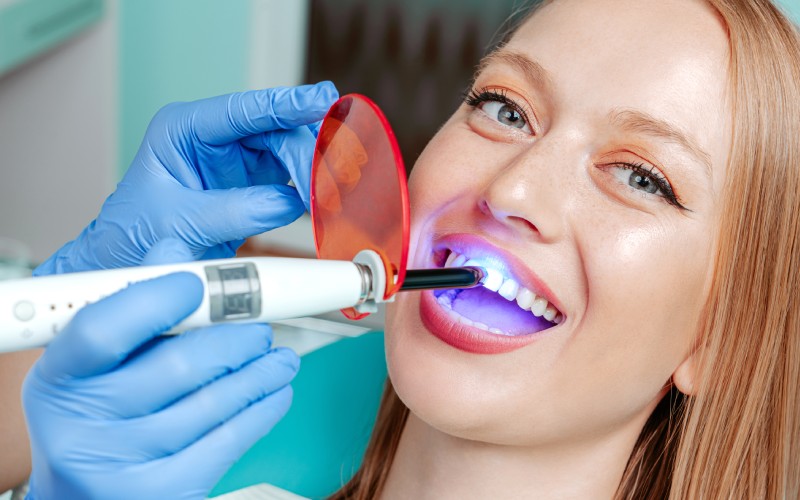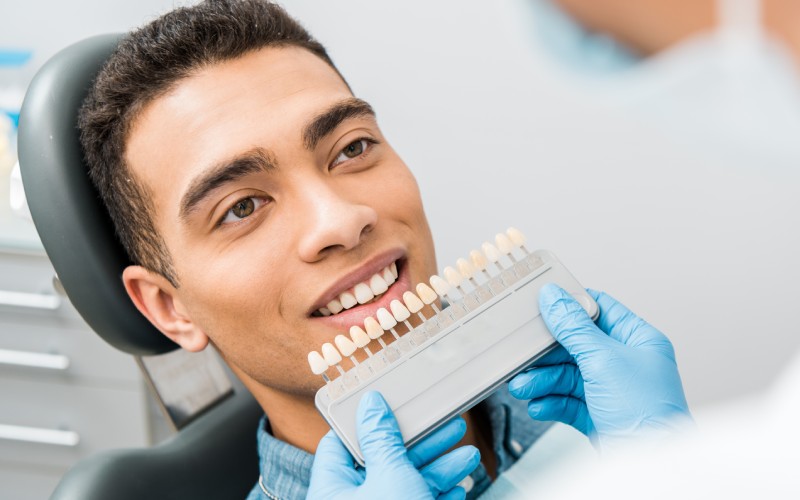Maintaining that brighter smile after teeth whitening isn’t just about vanity; it’s about preserving the investment you’ve made in your smile. With the right care, you can enjoy the shade improvement for much longer.
From the foods you eat to the way you brush, every choice impacts how long your teeth stay bright. Understanding the maintenance essentials is key to ensuring your teeth don’t lose their luster. Let’s dive into why keeping your teeth white is much more than just a cosmetic concern—it’s a cornerstone of making lasting impressions.
Why Teeth Whitening Maintenance is Important
Preserving Your Investment: After investing in professional teeth whitening, it’s not just about the immediate results. It’s about maintaining that bright smile. Much like purchasing a luxury car, it requires ongoing care to ensure its value and appearance endure.
Avoiding Stain Culprits: You’re likely aware that certain foods and beverages can be the nemesis of a white smile. Steering clear of elements known for staining, like coffee, red wine, and tobacco, is far easier when you’re committed to a maintenance routine.
Oral Hygiene Benefits: Regular maintenance isn’t just for aesthetics; it supports overall oral health. Through consistent brushing and flossing, you’re also fighting plaque, which can lead to tooth decay and gum disease—not just stains.
Longevity of Results: Studies show that without proper care, the effects of teeth whitening can begin to diminish within a month. A diligent maintenance plan can extend the life of those pearly whites, ensuring your smile stays vibrant for as long as possible.
Maintaining Confidence: A whiter smile is sometimes found to be linked to higher self-esteem. When you maintain your whitening results, you’re also nurturing the confidence that comes with knowing your smile is at its best.
To keep your teeth a bright shade, incorporate these habits:
- Use a whitening toothpaste with CDA approval
- Schedule regular dental clean-ups
- Rinse your mouth after consuming stain-prone foods and drinks
The Science Behind Teeth Staining
Understanding Different Types of Teeth Stains
When you’re looking to keep your teeth as white as possible, it’s essential to understand the different types of stains you might be up against. Extrinsic stains are those that appear on the surface of your teeth. Common culprits include:
- Smoking
- Beverages like coffee, tea, and red wine
- Foods like berries and soy sauce
These substances contain pigments that adhere to the enamel—the hard, outermost layer of your teeth—resulting in a superficial discolouration.
On the other hand, intrinsic stains form within the internal structure of your teeth, often from:
- Overexposure to fluoride during dental development
- Certain medications, like tetracycline antibiotics taken during tooth formation
- Trauma to the teeth which can cause internal bleeding and resultant discolouration
Unlike extrinsic stains, intrinsic ones are deeply seated and are not as easily removed by regular brushing or over-the-counter whitening products.
Factors that Contribute to Teeth Staining
There’s a wide array of factors that can contribute to the discolouration of your teeth. It’s not just about indulging in a cup of coffee or a glass of red wine. Here’s what you need to watch out for:

Dietary Habits:
Your diet significantly impacts tooth colour. Foods with intense colour pigments like cherries, blueberries, and pomegranates have a higher propensity to stain your teeth. These pigments latch onto the enamel and could require professional cleaning to remove.
Poor Oral Hygiene:
Regular brushing and flossing are pivotal in the fight against stains—as they remove surface stains and prevent tartar build-up, which can lead to discolouration.
Tobacco Use:
Whether it’s smoking or chewing tobacco, the nicotine and tar in these products are effective at staining teeth, often leaving a brownish residue that can be stubborn to clean.
Aging:
Over time, tooth enamel naturally wears down, and the yellowish dentin underneath begins to show through, making it harder to maintain a bright smile.
Genetics:
Sometimes, the thickness and natural sheen of your enamel are inherited, which means some people are more prone to staining than others.
Methods for Maintaining Teeth Whitening
Maintaining the lustrous results of teeth whitening treatments is essential for a lasting, bright smile. Understanding the right methods is key to ensuring the longevity of your whitening results. Here are some practical steps you can take.
Proper Oral Hygiene Practices
Good oral hygiene is the cornerstone of maintaining teeth whitening results. You’re advised to:
- Brush twice a day using fluoride toothpaste to remove plaque and prevent decay.
- Floss daily to eliminate potential stain-causing substances between teeth.
- Use mouthwash to reach areas your brush can’t, further reducing the risk of stains.
- Opt for toothpaste with baking soda occasionally, as it can help to remove surface stains without causing abrasiveness to the enamel.
Limiting Consumption of Staining Foods and Drinks
What you consume greatly affects the colour of your teeth. Limiting intake of certain foods and beverages can prevent stains:
- Coffee, tea, and red wine: These contain tannins which can lead to staining. Drinking less of these and rinsing your mouth with water afterwards can minimize their impact.
- Acidic foods and drinks that can etch tooth enamel, making it more prone to staining.
- Dark-coloured berries and sauces, which have intense pigments that adhere to tooth enamel.
- Introduce a straw for liquid consumables that may stain, as it directs liquids away from visible front teeth.
Immediately after whitening treatments, it’s especially crucial to avoid these substances for at least the first 48 hours.
Regular Dental Check-ups and Cleanings
Routine dental visits play a critical role in maintaining your teeth’s whiteness:
- Schedule regular dental check-ups to address any oral issues early on that might impact the colour of your teeth.
- Professional dental cleanings, recommended typically twice a year, can remove surface stains and tartar that everyday brushing can’t.
By implementing these methods, you’ll ensure a long-lasting bright smile whilst also promoting the overall health of your teeth and gums.

Professional Whitening Maintenance Options
Maintaining the brightness of your teeth after professional whitening requires a strategic approach to care. Here’s how you can keep that gleaming smile long after you’ve left the dentist chair.
In-Office Whitening Touch-ups
To sustain the brilliance of professionally whitened teeth, periodic in-office touch-ups are beneficial. These sessions utilize high-concentration bleaching agents under the careful supervision of dental professionals. An in-office touch-up typically takes about an hour, providing an efficient boost to your smile’s radiance.
- Quick results: In only one session, you can restore the brightness attained from your initial whitening treatment.
- Minimised sensitivity: Professional application ensures that your teeth and gums are less likely to experience adverse reactions.
- Prolonged cosmetics: Touch-ups can extend the lifespan of your whitening treatment beyond the typical six months to a year.
Remember, these touch-ups won’t be a daily routine—they’re part of a carefully structured maintenance plan. Your dentist will advise on the frequency of in-office touch-ups, ensuring they align with your specific oral health needs.
Whitening Trays for at-Home Maintenance
For convenient at-home care, whitening trays are your go-to option. They offer a practical way to maintain that dazzling smile between professional appointments.
- Custom-fitted trays: Designed to fit snugly over your teeth, these trays ensure even coverage of whitening gel, reducing the risk of gum irritation.
- Tailored whitening: Your dentist can provide whitening gel with a strength suitable for your teeth, balancing efficacy and comfort.
- Consistent results: Regular use of these trays can produce a stable level of whiteness, closely mirroring the effects of your in-office treatment.
It’s important to follow the guidelines provided by your dentist for the use of at-home whitening trays. Overuse can lead to enamel erosion or tooth sensitivity, so moderation is key.
Get the Most out of Your Teeth Whitening
Maintaining your teeth’s whiteness isn’t just about keeping your smile bright; it’s about preserving the health and integrity of your teeth long-term. By combining professional touch-ups at South Oak Dental with an at-home regimen you’re not only extending the life of your whitening treatment but also protecting your enamel from potential damage. Remember to adhere to Dr. Sidiura’s advice—it’s the key to ensuring your pearly whites stay radiant and healthy. So take charge of your dental care routine and enjoy everything that comes with a luminous smile.


